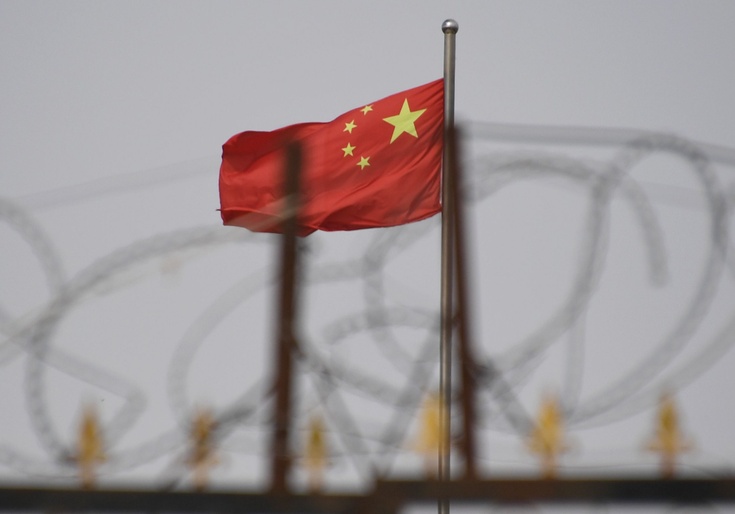China is building a field of more than 100 nuclear missile silos out of range of most U.S. weapons, satellite images reveal.
The silos appeared in satellite images of Xinjiang province—where China holds more than one million Uighur Muslims in internment camps—first published by the Federation of American Scientists. With the discovery this month of another silo field in Gansu province, China is known to be constructing almost 250 missile silos.
U.S. Strategic Command chief Admiral Charles Richard warned lawmakers in April that China is forging ahead at a rapid pace with its nuclear weapons buildup. Some Democrats, however, have ignored military warnings and urged reductions in the American nuclear arsenal even as China grows in strength.
Rebeccah Heinrichs, a senior fellow at the Hudson Institute, told the Washington Free Beacon the new images vindicate Richard and put pressure on the Biden administration to bolster America’s nuclear defenses.
"Some congressmen dismissed Admiral Richard's warnings about China's breathtaking nuclear weapons expansion, but he was right and they were wrong," Heinrichs said. "The Chinese have demonstrated that they can quickly expand the numbers and kinds of nuclear delivery systems they think they need to carry out their national agenda. The last thing we need is to succumb to outside pressures that are ideologically opposed to U.S. nuclear weapons."
As China amasses nuclear strength, Russia is also upgrading its own weapons systems. Moscow touted hypersonic nuclear weapons—capable of beating missile defense systems—at a July 25 parade. Russian president Vladimir Putin said Russia’s missile capabilities allow the country to deal an "unavoidable strike" to any enemy if needed.
Heinrichs said the growing danger posed by both China and Russia presents the United States with an unprecedented challenge: to face threats from two large military powers at once.
"During the Cold War we had to worry about how to deter one major nuclear power, now it is imperative we develop and tailor the kind of arsenal to deter two major nuclear powers who are each deterred differently," Heinrichs said. "The Congress and the Biden administration must work together to fund and field a modern deterrent able to meet the threats of today, and those threats are dynamic and are changing before our eyes."
